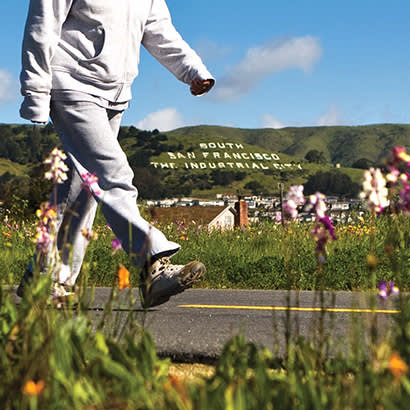
For an enhanced digital experience, read this story in the ezine.
Balancing the needs of humans and natural habitat through design and planning
Like most park developments, good design of urban-edge green spaces starts with a robust effort of research and community engagement. But unlike parks in mature, developed areas, a city’s interface with open spaces must take into account a host of additional factors, such as residential and commercial growth projections, land planning by private-sector interests adjacent to the park, and cooperation with local, state or national governmental jurisdictions.
Wildlands are of particular concern, especially with the growing anxiety over forest fires and extreme weather. California has experienced a significant increase, including fires that destroyed whole neighborhoods of Santa Rosa, California, in 2017 and wiped out the entire town of Paradise, California, in 2018. According to CalMatters, half of the state’s 20 largest-ever fires have occurred during the previous five years.
Among the tips and tactics for edge design in or near wildlands are:
Design for fire behavior – Incorporate less fuel-oriented plantings, little or no flammable mulch near structures, and avoid placement of large shrubs or trees that may form a fire ladder.
Defend the space – Clearing out brush and potential fire fuel along the urban edge gives a pause to fire’s ability to spread. Use fire-resistant plantings and actively maintain dead or dying material.
Go bare, in balance – At the outer edge of these parks, planners should consider even more extreme “safe zones,” such as decorative arroyos or dry creek beds consisting of boulders, gravel areas or low non-woody plantings, depending on the design objectives and conduciveness for habitat.
Keep it up – Maintenance is key to keeping new growth and decaying material cleared on a regular basis.
Putting those strategies into practice, the new home community of Lagoon Valley in the Central Valley of California benefits from significant green space and amenities, such as a planned golf course that doubles as a fire-resilience measure. Housing and development are sited for resident access to the environment with features like creeks and lagoons also considered for their benefit as fire defense.
A more common urban-edge situation is designing green space between cities and open habitat, large preserves or farmland, and natural features like wetlands or parks. Designing these spaces often integrates the needs of human access and enjoyment with the goals of enhancing plant and animal habitat. Strategies for edge design near open habitat include:
Environment-first design – Designing with nature in mind can support biodiversity while providing rich experiences for visitors. Protecting animal spaces, food supplies and travel routes helps define visitor areas, too.
Signage and education – Places that interface with wildlands or green space demand extra signage for safety. Explanatory signs of local flora and fauna enhance visitors’ enjoyment.
Site-sensitive planning – Location of hiking trails and visitor access points should flow with the natural landscape. View corridors are memorable spots for hikers and benches can provide a natural rest spot at the same time.
For City of South San Francisco, teams are designing improved access between the city and a 150-acre hilly green space that is home to the town’s famous 50-foot-tall sign, which reads: “South San Francisco, The Industrial City.” The park and open space lead up to the largely inaccessible San Bruno Mountains, which birds, coyotes and many others call home. Being implemented in phases, the master plan will enhance sensitive biological resources, improve visitor access, expand trails and protect existing elements, including the city’s historic sign.
Casey Case is President at Gates + Associates Landscape Architects.

